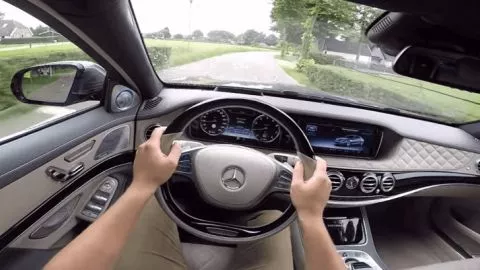novice driver-driving tips-driving well-driving well-driving well-driving well-driver novice driver
Contenido del artículo
Recognize the habits of the novice driver and get rid of them.
We have all gone through that uncertain period from the time we get our driving license until we get used to our vehicle. Safe driving also depends on the confidence we show at the wheel as a novice driver. At the beginning, the doubts and fears of inexperience can lead us to have certain novice habits. Identify them and get rid of them.
- The novice driver usually takes a friend or relative as co-driver.. Taking more experienced passengers to achieve a feeling of greater driving safety can sometimes have the opposite effect to that desired. Perhaps unconsciously, trust is placed in the co-driver. The co-driver is in charge of indicating, correcting and advising us, and can make us more nervous at the wheel. On the contrary, it can give us a false self-confidence that will disappear when the co-driver is not at our side.

- The novice driver does not assess his or her driving level according to reality. Normally, the novice driver leaves driving school with the minimum safety requirements for driving. That is to say, they have the basic knowledge to drive, but this does not mean that they have sufficient driving skills. In short, we should not get an unrealistic image of our skills. Also, do not despair: patience and practice will be the keys to successfully overcome this stage.
- The posture of the novice driver at the wheel makes all the difference. To drive well, you have to start with the most elementary: sitting properly behind the wheel. Adjust the seat so that your back is against the backrest. If you stretch out one arm completely without separating your shoulder from the backrest, it will be above the steering wheel rim. In this way, your hands will be placed in the quarter to three o'clock position. Your legs should be slightly bent so that you can reach all the pedals. Before buckling your seat belt, adjust all mirrors for proper vision.
- The novice driver does not usually read the road to anticipate. With practice, the driver's eyes are educated in such a way that he is able to anticipate all unforeseen events that may affect our normal driving. Thus, he is able to brake, enter curves well and avoid problems in time.
- High-speed braking can be problematic. If there is a problem driving at 120 km/h on the highway, braking correctly becomes vital. To avoid a collision, you must brake by pressing the pedal with all your strength. Also, as far as possible, steer the vehicle towards a safe area and forget everything else.

- The novice driver must beware of distractions. Trifles such as configuring the navigator before starting, avoiding tense conversations with the hands-free and waiting to answer Whatsapps, will ensure our safety at the wheel. A very simple way to reduce the accident rate.
- The novice driver must keep a safe distance at all times. Also, remember that the left lane is used exclusively for overtaking.
- Watch out for curves on the freeway. Driving in a straight line on highways is usually straightforward. However, before entering curves, certain steps must be taken. First of all, brake with the car straight ahead and slow down and then turn with both hands on the steering wheel. To promote road safety it is advisable to imagine the entry point to start the turn. Once inside the turn, start accelerating while undoing the turn of the steering wheel.
- By applying these tricks you will soon be driving like a pro.

